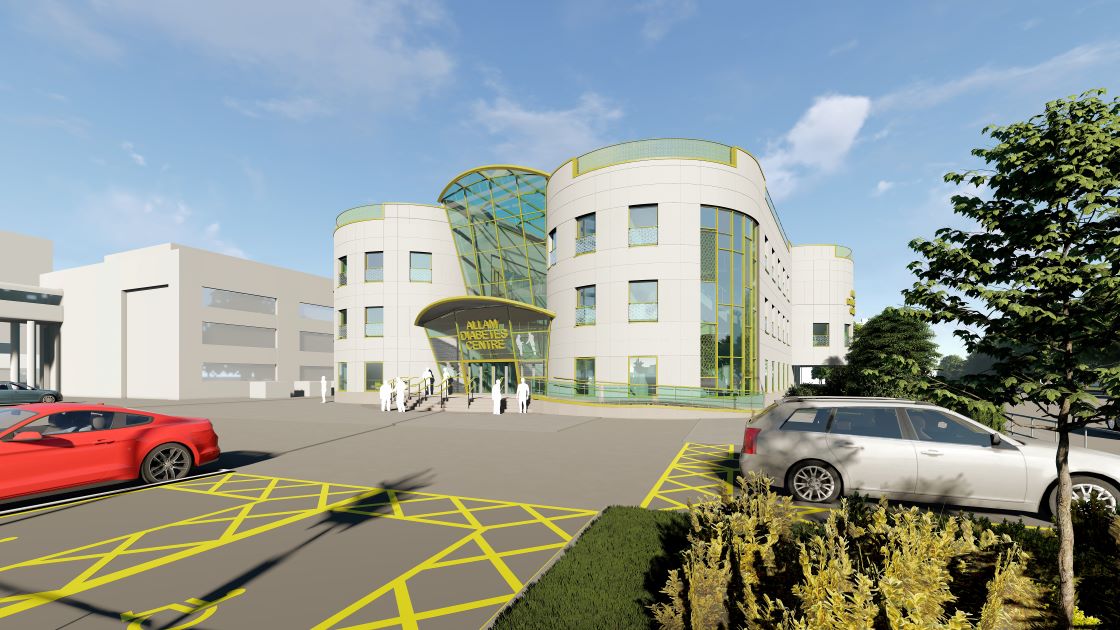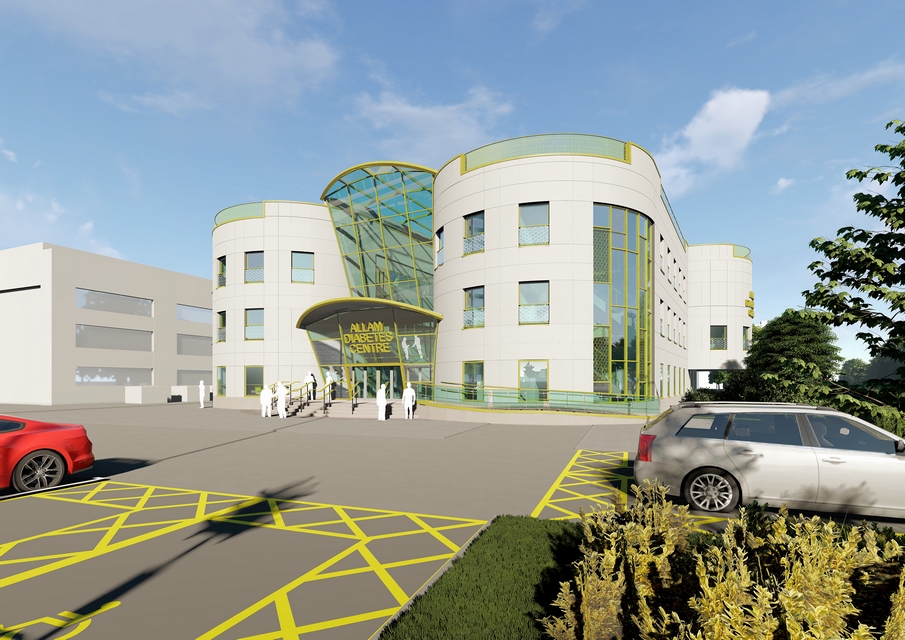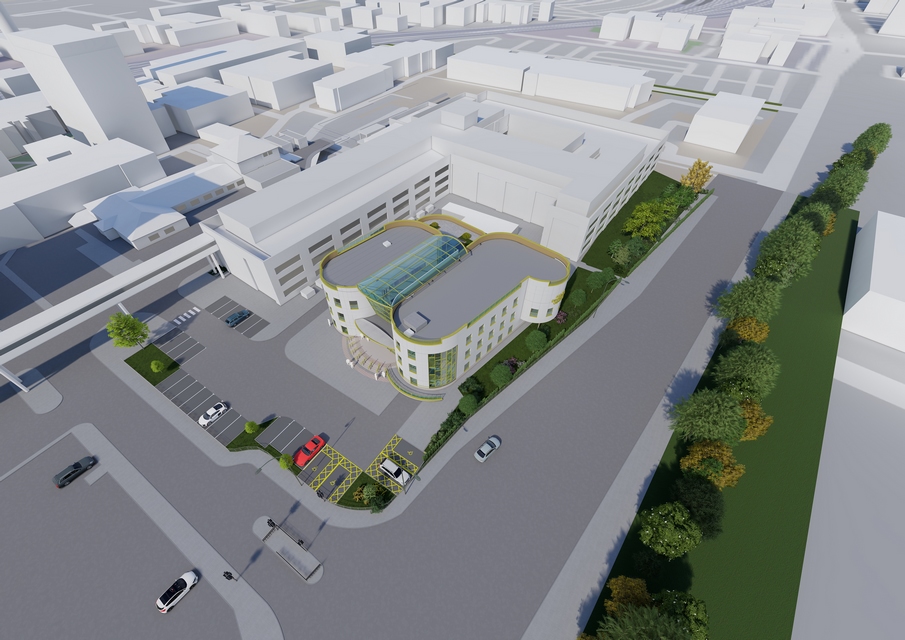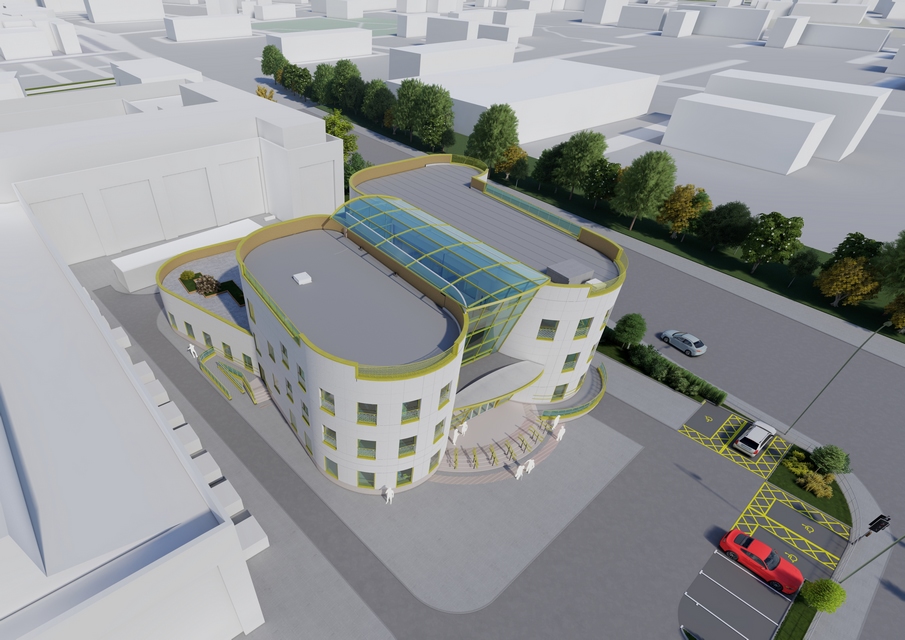Allam Diabetes Centre | Alessandro Caruso Architecture & Interiors Ltd | Architect of the Year Awards 2021
Alessandro Caruso Architecture & Interiors Ltd: Winner of Architect of the Year Awards 2021. The competition for The Allam Diabetes Centre in Hull (in 2017), was initially won by a global architecture practice. However, their design didn’t satisfy Dr Allam’s aspirations and as the main funder, he made the decision to let them go.
Due to a long-term working relationship, Hull University Teaching Hospitals NHS Trust admire Alessandro Caruso’s creative design responses and enthusiasm to previous projects completed, so they invited ACA to present an alternative design to Dr Allam. As a small, local and family practice with a more personable and less commercial approach, they demonstrated that ACA could not only be more adaptable and flexible in their delivery of this flagship project, but also design a building that would exceed his expectations.
Dr Allam immediately commented that Alessandro is a passionate architect, something he hadn’t come across before. Plus, his design reflected the initial brief for a state-of-the-art landmark for twin buildings to be constructed at the main entrances of two East Yorkshire hospitals – one for the Diabetes Centre in Hull and another for the Endoscopy Clinic in Cottingham, East Yorkshire.
This is just one reason why a small regional architect’s firm is eligible to win Architect of the year.
The other reason is a creative design concept that gives a hospital building a whole new sense of purpose.
The Allam Diabetes Centre is designed for Hull University Teaching Hospitals NHS Trust, to be the hospital’s Diabetes Centre of Excellence in Yorkshire.
The building design includes:
- Ground Floor: a large waiting area and reception, office space, consulting rooms and specialist treatment rooms with associated ancillary facilities.
- First Floor: individual and open plan offices and training rooms
- Second Floor: research consulting rooms, offices, store areas and roof void.
- Roof garden: planted area
- Outside: the works include improvements to parking facilities and landscaping.
The main funder Dr Allam, a well-known entrepreneur and philanthropist, set the brief to create a positive architectural statement at Hull Royal Infirmary, on Anlaby Road, an important gateway into the city. He wanted to improve the local street scene and attract high-calibre research staff and funding streams into the region.
With this is mind, Alessandro was keen to unleash his creativity. The building’s organic plan was inspired by the anatomy of the major organs affected by diabetes, reflected in the curved lines of the building and the skin of porcelain cladding is a symbol of protection for such organs.
The solid panels are intertwined with glazed surfaces partly shaded by perforated film with patterns uniquely designed and inspired by the molecular structures of insulin. The complexity of the molecular structure mirrors the complexity of the condition and the support required to keep people healthy.
It is unusual for buildings to have curves, as building in straight lines is far easier. However, taking the general geometry of the organs, ACA’s curved design creates a salutogenic effect, with an entrance designed to embrace and welcome people in.
During the design process ACA aimed to complement the hospital surroundings taking inspiration from a local listed building.
For the finish, Alessandro drew inspiration from Dr Allam’s Egyptian heritage to include a marble skin as a metaphoric protection for the organs affected by diabetes and golden coloured window frames.”
The porcelain cladding is a biodegradable material, with golden reveals and glazed atriums. The stylised concept gives elegant results and whilst the building had to wow and be impressive, they had a budget, so aluminium was converted into powder coated windows.
Hospital patients can often feel intimidated as they enter the premises, therefore, the ground floor reception is at human scale for a gentle approach. This opens into a large atrium with two floors for research and consulting rooms, offices, stores and a garden roof terrace for relaxation and reflection.
The architectural presence conveys an expression of cultural and civic values, which is of particular importance to the NHS.
The time frame has been a major challenge. The team had to overlap the concept development, planning application, drawing development and the tender package. This work is typically carried out in stages, but ACA had to do all of this work simultaneously, to meet the deadline, which would have affected the funding stream.
The development has a flexible layout, made up of a steel structure so that the internals can be built at any time.
The main strategy for sustainability of the building is the ventilation – the 3-stack effect ventilates the building naturally.
In the words of Ehab Allam, “I am very pleased with Alex Caruso’s and the ACA design team’s response to the brief; to design the Allam Diabetes Centre, as a recognisable and memorable landmark at the front of HRI.”
“My family and I are proud to be associated with such an iconic building, whose beautiful and inspired design has both lifted and transformed the local street scene to an unprecedented level for the area.”
A twin building is also under construction at the entrance of Castle Hill Hospital a few miles outside of Hull, in Cottingham. This will be home to The Allam Endoscopy Clinic. “ACA’s design of the Allam Diabetes Centre also fulfilled our aspirations for a twin building, the Allam Endoscopy Centre. Both buildings represent an important symbol of my family’s contribution to the city of Hull” says Ehab Allam.

Project Details
Firm
Alessandro Caruso Architecture & Interiors Ltd
Project Name
Allam Diabetes Centre
Architect/Designer
Alex Caruso
Architect of the Year Awards Category
Public Building Built
Project Location
Hull
Team
Alex Caruso, Sonia Kopacz, Sam Brewer, Kornel Witkowski, Giovanna Garbo
Country
United Kingdom
Photography ©Credit
©Alex Caruso

Studio profile
Alessandro Caruso Architects (ACA) is a small team of innovative architects which operate on a national level, specialising in healthcare projects.
In 1994, co-founder Alessandro Caruso had a serious motorbike crash and spent a long time in hospital. The environment was functional, but poorly designed for the mental health aspects of recovery. He promised himself, if he recovered, to emphasize wellbeing in his designs to help other people feel better and improve their lives.
So, ACA’s mission is to design happier and healthier environments for everyone that interacts with their buildings whether to live, work, visit, heal or study in.








